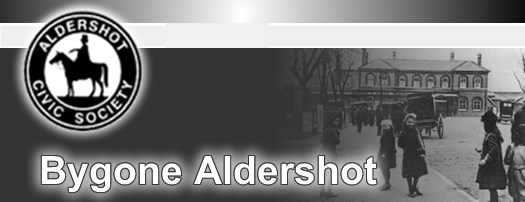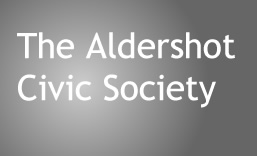Tracco | Railways | Trams
The Aldershot & District Traction Co. affectionately known as the 'Tracco' was formed around 1906 as the Aldershot and Farnborough Motor Omnibus Co. The company had obtained permission to run bus services through the military camp area. Two buses were purchased from Hastings and St. Leonards Omnibus Co. and on 1st June 1906 a half hourly service between Aldershot station and the Queens Hotel in Farnborough began. There had been previous attempts at running a tram service between the two locations.

The company expanded and new routes were opened to Ash and Farnham by 1908. By 1912 however the company required much needed funding if it was to expand any further. In 1912 the British Automobile Traction Co. Ltd. and the New Central Omnibus Co. Ltd. made offers to purchase the company. The BAT offer was accepted and the company reformed into the Aldershot & District Traction Company on 24th July 1912. With this capital the company set out on a period of expansion.
The original garage consisted of rented space at Lawes Motor Works in the centre of the town, but by 1908 a site was purchased in Halimote Road and a garage was constructed to hold four vehicles. This site remained the company headquarters and offices for many years. Orders were placed for additional vehicles and the route structure expanded operations to Fleet in 1912 and Camberley in 1913. Further services were added when the route between Farnham and Halsemere (first started by the London & South Western Railway in 1906) was taken over.
By 1914 the company had started services to Guildford via Ash and Pirbright and then on to Godalming. Further routes were opened from Guildford to Dorking via Albury and also to Leatherhead. Towards the end of 1914 A &D had taken over the Guildford & District Motor Services and therefore acquired a base in Guildford.
The First World War bought a large expansion for the company with contracts for the War Department. A fleet of motor lorries and steam wagons were purchased to operate these as well as expanding the existing parcels operation. Many of the goods vehicles were based in Haslemere and a garage was purchased for this purpose. Services from Haslemere extended down to Midhurst and Sussex. 1915 bought further services through to Basingstoke and by 1916 to Reading.
--------------------------------------------------------------------------------
Peacetime bought a large number of surplus vehicles on to the market, which were converted to bus use. Further expansion continued and in 1920 services started to Alton. Meanwhile the WD contract had ceased and the goods fleet were reduced.
Rapid expansion stretched financial resources and in 1921 it was decided to abandon the goods services, along with the Basingstoke services. Although some route expansion still continued by adding Egham, Chicester and Petersfield to the map. In 1922 the Alton service was extended through to Winchester.
By the mid 1920's the company had committed itself to purchasing vehicles from Dennis Brothers of Guildford and remained with them for at least 30 years, purchasing their last vehicles from Dennis in the mid 1960s. The bodywork during this time was constructed mainly by Strachans of Acton.
During this time a number of bus wars had started with many small concerns setting up with little regard for timetables or licencing. This forced the company to retaliate by cutting fares and using 'chasers' buses run in front of the competition to poach fares. Along with another ready to take over when the front bus stopped. many areas were involved in the wars and numerous takeovers ensued. January 1928 saw the takeover of Farnham Coaches and the start of it's coach service to London, by 1934 it had become a successful half hourly service following the takeover of Farnham Blue Coaches.
This was a period of low prosperity for the company. but, by 1931 the company had opened a new garage in Goldsworth Rd, Woking and another at Hindhead which replaced the original at Haslemere. The Aldershot depot too had expanded enormously being the company's main headquarters. Guildford also had a new garage erected in 1927 on the corner of Woodbridge Road.
In 1930 new licencing laws put an end to the bus wars and the speed limit raised for buses and coaches. This year saw the acquisition of a one third shareholding by the Southern Railway in the company equal to that owned by BAT. in 1932 after negotiations routes to the east of Guildford were effectively handed over to the fledgling London Transport.
World War 2 began and the company supplied a number of older busses for conversion into ambulances. Painted grey they were fitted out with supports for stretchers. But, after the huge loss of equipment in 1940 at Dunkirk, many were taken into military service. Wartime measures created cuts in evening, Sunday morning and the express services. Fortunately the company never sustained any losses due to enemy action.
After the war, services began to return to normal equipment permitting. The ex-ambulance and army busses returned to the company and were refurbished for return to service. 1950 saw the largest number of passengers carried, totalling over 50 million an all time record. The Farnborough Airshow first held in 1948 enabled the company to carry 80000 passengers for the 1953 event. The Woking and Alton garages doubled in size in 1952 and trials of other bus manufacturer types took place. The company eventually settled on AEC of Southalll as provider of the single deck fleet in 1954. Dennis had lost its stranglehold on the company. Although they (Dennis) still supplied doubledecker vehicles, the last being delivered in 1965. This vehicle was the Loline a development of the Bristol Lodekka which appeared in 1958. In that year the Guildford garage was extended.
The 1960's saw the introduction of later variants of the AEC range and along with the Dennis Loline, was the mainstay of the companies fleet. Falling passenger numbers led towards one man operation and the gradual withdrawal of double deckers. 1968 saw the British Electric Traction Co. sell its share in the company to the nationalised Transport Holding Co. this had already acquired the railway third of the shares. The National Bus Company was formed in the following year and Aldershot & District became a subsidiary.
It was announced in 1971 that the company would merge with its neighbour Thames Valley based in Reading. Operating under the name of Alder Valley and a change of livery from the familiar two tone green and cream to that firstly of maroon and finally poppy red. Eventually even this company disappeared and all operations were taken over by Stagecoach sometime in the 1980s.
|
|
|



